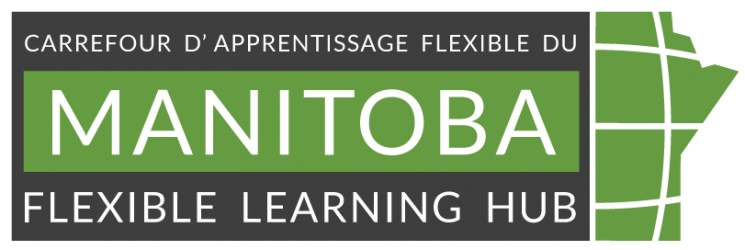
Image from elenabs by Getty
Developing online learning activities for blended or distributed learning courses
Content review June 2023
This article is adopted and modified from Developing Online Learning Activities for Blended Courses. Centre for Teaching Excellence, University of Waterloo under the Creative Commons license.
Active learning in the classroom can increase student engagement and promote learning. The online environment can also be used to create active learning opportunities for students that help them engage with challenging concepts or that provide self-assessment or self-reflection opportunities. Blended courses, those with online and face-to-face components, provide an opportunity to integrate the learning that is done online and, in the classroom so that students can see clear connections between what they are doing in both environments.
The questions (with potential considering factors) outlined below can help you think about the objectives of an online activity, the appropriate technology for building it and how students will receive feedback and be assessed on their learning and work.
Online learning activities include synchronous and asynchronous online discussions, online self-assessments, blogs, wikis, virtual field trips, virtual labs, case studies, simulations, problem-solving, concept mapping, and interactive learning objects. Activities can be relatively straightforward tasks that an individual can complete in a short amount of time, or more complex activities that can include collaboration between students and have a longer timeframe. All activities should promote meaningful engagement with course concepts and not become “busy work” for the students.
Ask yourself:
What is the objective or intended learning outcome of this activity?
Most course outlines have a set of course objectives or intended learning outcomes for a course; using these same principles for online learning activity.
- Articulate specific objective(s) or intended learning outcome(s) for the activity.
How long should the learning take?
- The interaction and learning time can be short, for example, a 5-minute self-assessment for students to monitor their understanding of a concept.
- It can be longer, such as a series of practice problems that are linked to a java applets or web-based interactive simulations that could take up to an hour.
Will the activity be individual, collaborative or both?
- Typically, we tend to imagine students working individually at their computers!
- For challenging concepts and problem-solving, peer–to–peer interactions and dialogue can increase the learner’s engagement and help learning, so it can be helpful to design activities with this in mind and to encourage students to collaborate on such activities.
Which media and technologies should be used?
- Keep it simple. The overwhelming range of tools and media options available can make it challenging to choose how best to design and deliver an online activity.
- Use the activity’s objective or intended learning outcome as a starting point to decide which visual and audio components will be more effective.
- A Learning Management System (LMS) provides many tools that can be the starting point of a learning activity (quizzes, discussion forums, wikis)
- Scaffolded learning opportunities can be created to provide a sequence of activities of increasing complexity or difficulty in a controlled timeframe or through a series of learner actions.
- Always consider your organization’s policies before developing learning activities, that use resources or tools that are external to your institution’s LMS.
How will the learners get feedback on what they have learned?
- If providing individual feedback is impractical, model answers or links to helpful resources can be provided automatically and immediately online and can be based on their performance in the activity.
- Effective feedback to activities can also be given to the whole class during class time where the online activity can be a springboard to deeper in-class learning or connected to new concepts.
How will the learning be assessed?
Both formative and summative assessments can be part of an online learning activity depending on the objective or intended learning outcome of the task.
- Use summative assessment for students by grading them on tasks and their grade, or mark, reflects how well they have performed on the task. Typically, these learning activities are considered assessments of the course.
- On the other hand, formative assessment can help students recognize misconceptions and guide them to better understanding and thus better performance on future assessments.
How will I motivate students to participate in the activity?
- If an activity is perceived as valuable to students and properly integrated into a course, students will be more motivated to do the activity.
- Students are more likely to participate in low-stakes activities if they are going to be integrated into their experiences in the classroom, tutorial or lab.
- Providing real-world, authentic tasks that are relevant to students’ lives or future professional lives that are challenging but achievable can also increase motivation.
How will learners communicate with each other and ask the instructor questions?
- Providing opportunities for students to ask questions about the learning activity in class through online frequently asked questions or discussion boards.
- Create an option to interact with peers through discussion boards and online frequently asked questions that can help create a supportive environment for learning.
Activity support for your blended or distributed course
If you would like to have support applying these tips to your own teaching, Manitoba Flexible Learning Hub members are here to help. View the MB Hub Consultation page to learn more about the process.
Book a one-on-one “Instructional Design Consultation” with our Instructional Designer to help you develop activities for blended or distributed courses today!

References
Ambrose, S.A., Bridges, M.W., DiPietro, M., Lovett, M.C. and Norma, M.K. (2010) How Learning Works: Seven Research-Based Principles for Smart Teaching. San Francisco: Jossey-Bass.
Bonwell, C. and Eison, J., (1991). “Active learning: Creating excitement in the classroom.”ASHE-ERIC Higher Education Report No. 1.
Chickering, A. and Gamson, S.C., (1996). Implementing the Seven Principles: Technology as a Lever, AAHE Bulletin, October, pp.3-6.
Fink, L. D. (2003). Creating significant learning experiences: An integrated approach to designing college courses. San Francisco: Jossey-Bass.
Meyers, C. and Jones, T.B. (1993). Promoting active learning: Strategies for the college classroom. San Francisco: Jossey-Bass.
Stice, J. E. (1987). “Using Kolb’s Learning Cycle to Improve Student Learning.” Engineering Education, 77(5), 291-296.
Wiggins, G. and McTighe, G., (2005). Understanding by Design. Alexandrai, VA: Association for Supervision and Curriculum Development.

This work is licensed under a Creative Commons Attribution-NonCommercial 4.0 International License.
You may also be interested in



